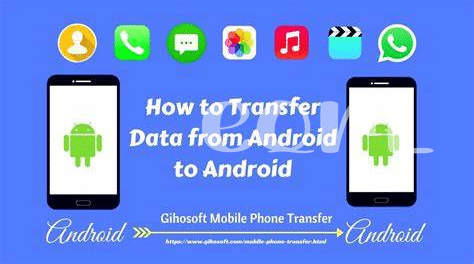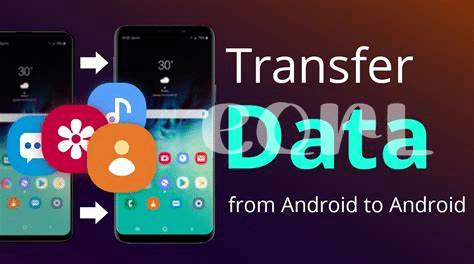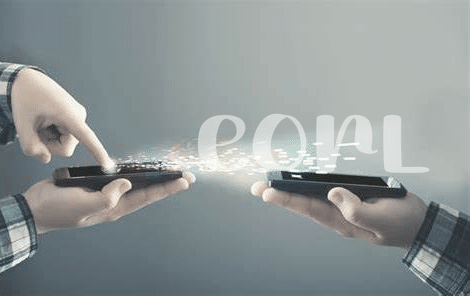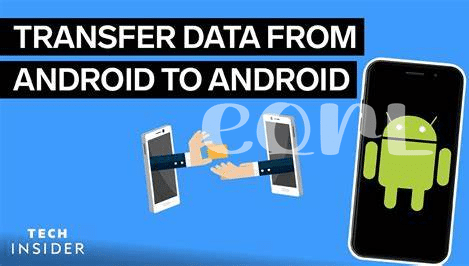
- Unveiling Android’s Wireless Magic 📡
- Bluetooth Vs. Wi-fi Direct Smackdown 🥊
- Near Field Communication: a Tap Away 🤝
- Cutting-edge: Android Beam & Samsung Flow 🚀
- Third-party Apps: Enhancing Your Transfer Experience 🌟
- Troubleshooting Common Wireless Transfer Woes 🛠️
Table of Contents
ToggleUnveiling Android’s Wireless Magic 📡
Step into the realm of seamless connections, where your Android device becomes a conduit for effortless data exchange, no strings attached. Imagine transferring photos, videos, or apps to a friend’s phone with a gentle bump, or streaming your favorite movie to a smart TV without a tangled web of cables. This invisible labyrinth of data highways empowers your device to interact, synchronize, and share content through the ether with graceful ease.
But how does this sorcery operate? Essentially, your smartphone harbors a suite of wireless technologies, each designed for a specific role in the data-sharing ecosystem. Whether it’s flinging files across the room with Bluetooth, creating an impromptu network via Wi-Fi Direct, or using the subtle touch of NFC (Near Field Communication) for pairing devices, Android has got you covered. Below lies a snapshot of these wireless marvels that have quietly revolutionized the way we interact in the digital space:
| Technology | Use Case | Range | Data Transfer Speed |
|---|---|---|---|
| Bluetooth | Pairing peripherals (headphones, speakers) | Up to 100 meters (Class 1) | 1-3 Mbps |
| Wi-Fi Direct | Sharing large files | Up to 200 meters | 250 Mbps or higher |
| NFC | Simple device pairing, contactless payments | < 20 cm | 424 kbps |
Guided by the magic wand of Android’s OS, these protocols harmoniously deliver the content you love and the files you need, all without the clutter of physical connections. Whether you are a tech aficionado or simply someone who appreciates the convenience, the wireless capabilities of your Android device undeniably weave convenience into your daily life.
Bluetooth Vs. Wi-fi Direct Smackdown 🥊
When it comes to invisibly slinging files between devices, Android users get to pick their fighter: Bluetooth—an oldie but goldie, with its widespread compatibility and straightforward pairing process, or Wi-Fi Direct—a heavy-hitter enabling higher-speed transfers without a middleman network. 🥊 Bluetooth, the seasoned contender, excels for its low power usage and is ideal for sending small bursts of data, like contacts or photos, over short ranges. In contrast, Wi-Fi Direct is the bruiser in the ring, leveraging Wi-Fi speeds to exchange larger files such as videos or app data, proving that size and speed do indeed matter. 🏋️♂️
However, even with wireless convenience, there are times you might want to clear the slate, much like understanding how to delete cash app account on android. Whether opting for the finesse of Bluetooth or the raw power of Wi-Fi Direct, users must navigate a labyrinth of settings and approvals. They may encounter hiccups where devices refuse to connect or transfers inexplicably halt—an all too common occurence where the right guidance is as crucial as choosing your wireless champion. 🛠️
Near Field Communication: a Tap Away 🤝
In a world where we’re constantly on the move, the art of seamlessly sharing content between devices is akin to digital wizardry. 🧙♂️ Within this realm, the sorcery known as Near Field Communication (NFC) stands out. It lets devices communicate by simply bringing them within a few centimeters of each other. Imagine tapping your smartphone to a friend’s tablet to share the latest viral video – no cables, no hassle, just a brief encounter of tech! NFC’s convenience is only matched by its speed, making it a beloved feature for those who value quick and effortless interactions.
However, as with any tech marvel, NFC isn’t without its quirks. Users might occasionally fumble, finding that their devices are not communicating as expected. Often, it’s a simple case of misaligned devices or a forgotten enablement of the NFC feature in settings. Sometimes, though, one might encounter an NFC anomaly that could leave them scratching their head—did the transfer recieve or was it lost in the digital ether? This underscores the importance of double-checking settings and ensuring both sending and recieving devices are primed for the magical tap. 🌐✨
Cutting-edge: Android Beam & Samsung Flow 🚀
As the Android ecosystem perpetually evolves, so do user-friendly features that streamline our daily digital interactions. Enter the realm of effortless data swapping through Android Beam, utilizing simple taps to transfer multimedia, contacts, and even apps between devices. This feature, built on NFC protocols, offers a touch-and-go approach, symbolizing a leap into the convenience of cutting-edge technology. On the flip side, Samsung Flow takes the baton to push the boundaries further. With Flow, experience seamless connectivity that not only grants the power to share files across Galaxy devices but also extends a PC integration that ushers in an age of unified device management and notification syncing. This synergy signifies a transformative approach to multitasking and file management, mirroring the sophisticated webs we navigate across our gadget ecosystems. For those yearning to streamline their digital routine, the knowledge of how to delete cash app account on android is just the tip of the iceberg in exploring what your smartphone can acheive. These advancements, although occasionally marred by connectivity hitches or compatibility qualms, are the testament to Android’s commitment to wireless mastery and user empowerment.
Third-party Apps: Enhancing Your Transfer Experience 🌟
Venturing beyond the built-in capabilities of your Android device opens up a realm where efficiency meets versatility. The Google Play Store is sprinkled with third-party applications designed to transcend the limitations of pre-installed software, making file sharing not just a necessity, but a delight. Imagine seamlessly sending your entire holiday photo album to a friend in seconds, or sharing that hefty presentation before the meeting begins – these are not mere conveniences; they’re today’s standards of digital interaction. And with developers constantly refining their apps, embracing updates and feedback, the user experience is only set to climb higher.
Among the pantheon of these third-party aces, apps like ShareIt and Xender stand out, bringing to the table an intuitive ease to connect and a rapidity that rivals traditional methods. 💫 With a few taps, these apps engage in a dance of data exchange, fostering an almost magical connection between devices. Take, for instance, the clever use of QR codes, wich create a secure gateway for your precious bytes to travel through. It is this fusion of innovation and user-friendliness that not only demystifies wireless data transfer, but propels it into the realms of what feels like futuristic tech. Yet, amidst this digital utopia, be mindful; a typo here, a configuration oversight there – and the spell may break, nudging you towards the troubleshooting chapters of your experience.
| App Name | Description | User-Friendly Rating |
|---|---|---|
| ShareIt | Allows for high-speed file transfers using Wi-Fi Direct | 4.5/5 |
| Xender | Features phone-to-phone and phone-to-PC sharing | 4.4/5 |
Troubleshooting Common Wireless Transfer Woes 🛠️
When the seamlessness of wireless data transfer encounters a snag 🛠️, the vexation can set your teeth on edge. Yet, fear not, as oftentimes, the fix is within reach, needing just a bit of knowledge and a few taps. If a Bluetooth transaction stalls, a simple toggling off and on can reinvigorate the connection; it’s akin to giving it a gentle nudge to remind it of its task. Meanwhile, Wi-Fi Direct issues generally sprout from cluttered channels or device compatibility hitches. It’s worth checking if all devices are harmonized on the same frequency band. NFC’s hiccup, more often than not, occurs from misaligned devices – so ensure they are virtually kissing! 🔧✨ If you encounter persistent problems despite these attempts, delving into the network settings and clearing the cache can act as a palate cleanser for your device’s wireless capabilities. Remember, patience and attention to detail are your co-pilots in navigating these wireless skies.




